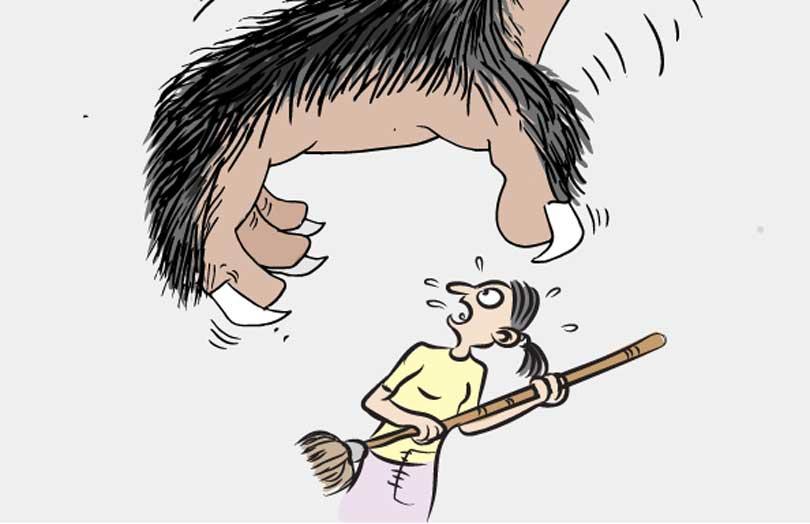Reply To:
Name - Reply Comment

The death of the teenage housemaid who had been employed by the family of former minister Rishad Bathiuden on July 15 has been politicized in both mainstream and social media and communalized for some extent in social media.
Almost all, including leaders of political parties and various other organizations rightly demand the justice be meted out to the 16-year-old girl’s family. However, apart from the representatives of the plantation community to which Ishalini, the girl died under mysterious circumstances belonged to, it is the ruling party politicians who are agitating most for the rights of the girl. Given the nature of the relationship of the ruling coalition and the former minister, the motive of the ruling coalition is very clear, despite their demand being appropriate.
Nevertheless the incident is not an isolated one. It is the tip of a huge iceberg of the modern day slavery, involving domestic workers, a sizable number of whom are children. This slavery is unofficially approved, recognized and well maintained by the people of upper middle class and above, including the legislators of many countries including Sri Lanka, without much hesitation by the families of those workers.
The National Child Protection Authority (NCPA) Chairman Prof. Muditha Vidanapathirana after the unfortunate incident at Bathiudeen’s house had told media that the authority has received information that under-age children are being employed as domestic aides in some city’s wealthy households. Yes, obviously, it is a decade-long well-known fact, though the NCPA received that information lately.
As a percentage, it is the Tamil speaking people of the plantation area that supply the highest number of domestic workers and child labourers to the wealthy families in Capital Colombo and other main cities. The Kandy-based Human Development Organization (HDO) had revealed in 2009 after a similar horrific incident that worker families in one estate in Maskeliya alone had sent around 30 children as labourers to work in affluent households in Colombo.
Domestic workers comprise a significant part of the Sri Lankan workforce similar to the situation globally. They are possibly the most vulnerable groups of workers. They work for private households often without clear terms of employment and with only verbal agreement between the employer and the employee. Such agreements are not made on parity, but mainly the compulsion of the circumstances under which the worker lives is the driving force behind those agreements. These people are a lot invisible and undocumented and hence excluded from the scope of labour laws.
According to the International Labour Organization (ILO), currently, there are at least 67 million domestic workers worldwide. One in every 25 women workers worldwide is a domestic worker. Many local and international organizations have compiled reports about domestic workers in Sri Lanka; yet, the number of local domestic workers is unclear. No research has been done on the matter even by the plantation trade unions that thrive on the contributions of the estate workers.
International organizations and the government in Sri Lanka have been paying lip service towards the rights of the domestic workers, especially the child workers. After so many decades of researches, reports and international conventions about the child labour, the United Nations General Assembly unanimously adopted resolution 73/327 declaring this year (2021) as the International Year for the Elimination of Child Labour in July 2019.
Sri Lanka has pledged the international community to end Worst Forms of Child Labour by year 2022 and to Eliminate Child Labour by 2025. A National Steering Committee on Elimination of Child Labour was formed by the Ministry of Labour, following the Global Conference on Child Labour held in The Hague, the Netherlands in 2010, to realize the goal of a child labour-free country. Although the committee was formed in 2010, it was only on July 20 last year that a Technical Committee to prepare a road map in achieving the target was appointed. That committee decided on December 8 last year to assess the child labour situation in Sri Lanka. It is anybody’s guess whether the country would be free from child labour just in four year.